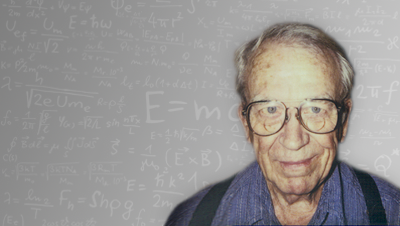
In Memoriam: James Draper
Professor Emeritus James Draper passed away on February 16, 2020.
James' Research Interests:
Professor Draper joined the Physics Department in 1964. Our group in relativistic nuclear physics is analysing the properties of the thousands of particles that are produced when Au nuclei are crashed into other Au nuclei at RHIC (Relativistic Heavy Ion Collider) at BNL (Brookhaven National Lab). These nuclei are moving so fast that each has a total energy 100 times their mass at rest. These particles are analysed in STAR (Solenoidal Tracker At RHIC) using the STAR Time Projection Chamber. The total energy in such Au-Au collisions was the largest in the world before LHC recently came online. A major component of these studies is to search for evidence of formation of the QGP (Quark Gluon Plamsa) likely to be formed in such Au-Au collisions. This is theoretically expected to occur when the energy density is so high that quarks are no longer confined to individual nucleons (3 per nucleon). The nuclei are so squished that the quarks roam and strongly interact via gluons through a volume several hundred times as large as their original nucleon, a situation like the universe a few 10s of microseconds after the Big Bang. RHIC has been operating since ~2000 and is producing many very interesting results. The QGP is likely to have been observed experimentally at RHIC but many more experimental signatures of the QGP must be studied and sharpened to afford understanding.
JED was primarily responsible for the conceptual technical design and proof of principal of the two FTPCs (Forward Time Projection Chamber) at STAR. The final hardware design and construction of the two FTPC's was made by the Max Planck Institute in Munich. He was editor of the FTPC proposal submitted to STAR for funding and implementation. He was a member of the STAR Council, participates in the physics implications of the data, and has served on a number of publication committees (small) to QA the final content of individual publications in journals by STAR.
In the 1980s, Professor Draper collaborated with the group at Lawrence Berkeley Laboratory studying high-spin (>~ 20 hbar) structure of nuclei with the 88-inch heavy-ion cyclotron.
Research Areas
Career History
- Ph.D. - Cornell University, 1952
Honors
- Elected Fellow of the American Physical Society.
- Consultant at Lawrence Berkeley Laboratory.
- Elected Fellow of the American Association for the Advancement of Science
- Formerly Associate Professor at Yale University.
- Fellow of Jonathan Edwards College at Yale University.
- Elected to Phi Beta Kappa and to Sigma Xi.
- Valedictorian of Williams College class.

